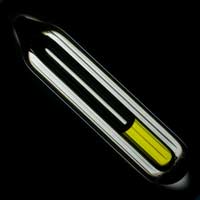Chlorine and Its Effects
What are the immediate health effects of chlorine exposure?
"The health effects resulting from most chlorine exposures begin within seconds to minutes. The severity of the signs and symptoms caused by chlorine will vary according to amount, route and duration of exposure.
Inhalation: Most chlorine exposures occur via inhalation. Low level exposures to chlorine in air will cause eye/skin/airway irritation, sore throat and cough. Chlorine's odor provides adequate early warning of its presence, but also causes olfactory fatigue or adaptation, reducing awareness of one's prolonged exposure at low concentrations. At higher levels of exposure, signs and symptoms may progress to chest tightness, wheezing, dyspnea, and bronchospasm. Severe exposures may result in noncardiogenic pulmonary edema, which may be delayed for several hours.
Ingestion: Since chlorine is a gas at room temperature, it is unlikely that a severe exposure will result from ingestion. However, ingestion of chlorine dissolved in water (e.g., sodium hypochlorite or household bleach) will cause corrosive tissue damage of the gastrointestinal tract.
Eye/Dermal Contact: Low level exposures to chlorine gas will cause eye and skin irritation. Higher exposures may result in severe chemical burns or ulcerations. Exposure to compressed liquid chlorine may cause frostbite of the skin and eyes.
Children may receive a larger dose than adults exposed to environments with the same levels of chlorine gas because they have greater lung surface area-to-body weight ratios and increased minute volumes-to-weight ratios. In addition, they may be exposed to higher levels than adults in the same location because of their shorter height and the higher levels of chlorine gas that may be found nearer the ground."
New York State Department of Health
Chlorine: Why Your Skin Ages as You Shower?
 "Chlorine has long been recognized as an oxidative agent, meaning that it not only kills the germs in the water supply; it will damage any living tissue with which it comes in contact. And your skin, like the rest of your organs, is living tissue. But that's not the only problem. Did you know that the steam from your hot showers actually contains chlorine vapors which latch onto the organic compounds in the air around you to create chloroform gas, a known lung irritant and fatigue-producer? Your body can actually absorb more chlorine from your quick morning shower than it does when you drink your recommended eight to ten glasses of water each day! So if you are fond of hot showers, the least you can do is equip your shower head with a filter to prevent those chlorine vapors from forming.
"Chlorine has long been recognized as an oxidative agent, meaning that it not only kills the germs in the water supply; it will damage any living tissue with which it comes in contact. And your skin, like the rest of your organs, is living tissue. But that's not the only problem. Did you know that the steam from your hot showers actually contains chlorine vapors which latch onto the organic compounds in the air around you to create chloroform gas, a known lung irritant and fatigue-producer? Your body can actually absorb more chlorine from your quick morning shower than it does when you drink your recommended eight to ten glasses of water each day! So if you are fond of hot showers, the least you can do is equip your shower head with a filter to prevent those chlorine vapors from forming.
Chlorine has an extreme drying effect, not only on the hair, but on the skin. As the skin becomes drier, it also ages more quickly. So just as you can add a chlorine filter to your shower, you can also add a filtrating system to your entire home water supply. You should take whatever steps necessary to ensure that you are neither bathing in nor drinking chlorinated water.
What many people may not realize is that chlorine has a definite aging effect on the skin!
What those same people may also not know is that chlorine was chosen as the primary disinfectant for our water supply not for its safety, but for its cost. But that cost does not factor in the health risks which come from drinking chlorinated water. The risk of developing cancer, for example, is more than ninety percent higher in those who regularly drink chlorinated water than in those who do not."
Chlorine: Why Your Skin Ages as You Shower? - Marcus Ryan
"Chlorine is the greatest crippler and killer of modern times. While it prevented epidemics of one disease, it was creating another. Two decades ago, after the start of chlorinating our drinking water in 1904, the epidemic of heart trouble, cancer and senility began."
Saginaw Hospital - J.M. Price, MD
"Showering is suspected as the primary cause of elevated levels of chloroform in nearly every home because of the chlorine in the water. Chloroform [a known carcinogen] levels increase up to 100 times during a ten-minute shower in residential water."
Enviromental Protection Agency - Dr. Lance Wallace
"Other studies have indicated that exposure to chlorine, via inhalation, may alter disease resistance in animals, with higher incidences of emphysema, pneumonia, and tuberculosis reported."
Air Toxics and Risk Assessment - 1991
"A Professor of Water Chemistry at the University of Pittsburgh claims that exposure to vaporized chemicals in the water supplies through showering, bathing, and inhalation is 100 greater than through drinking the water."
The Nader Report, Troubled Waters on Tap - Center for Study of Responsive Law



